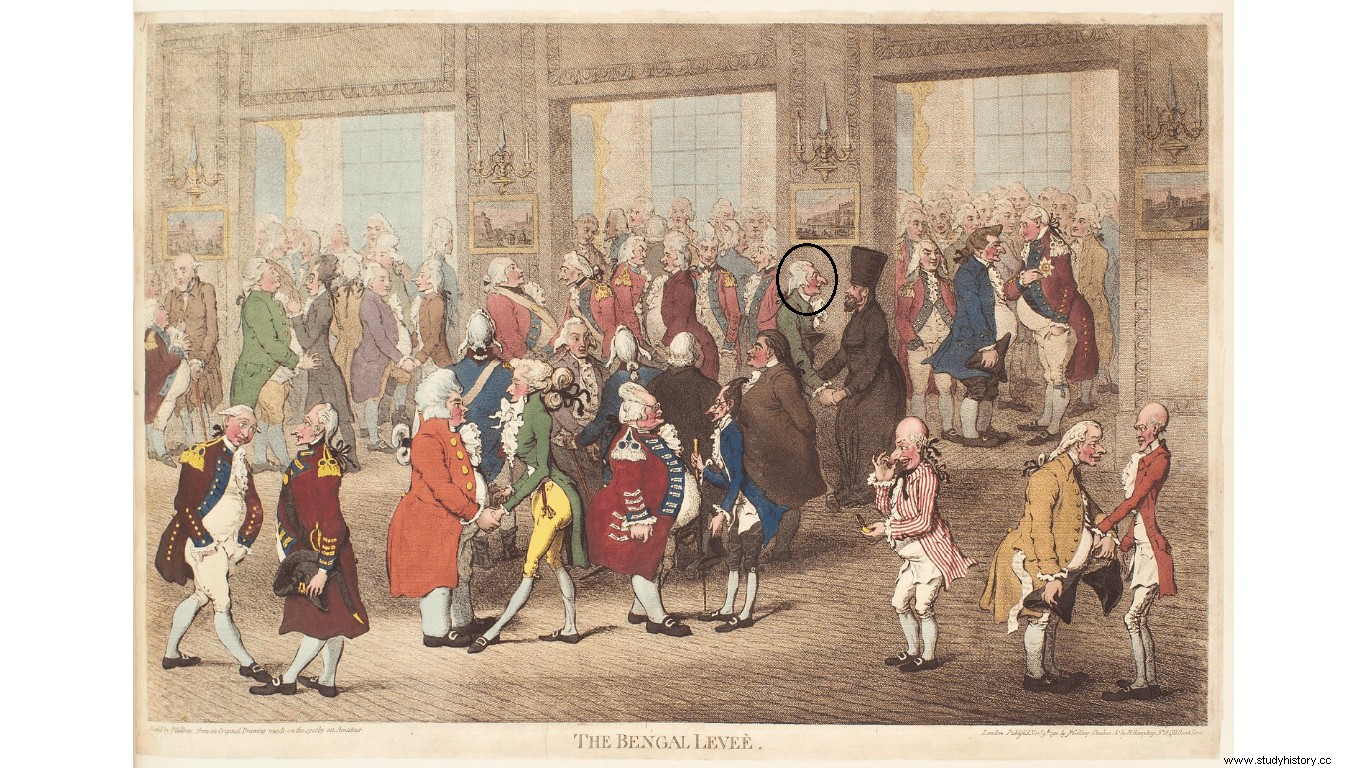
Tiretta Bazaar (Calcutta)
In the last published article (World Historic Heritage in Danger) the Tiretta Bazaar neighborhood appeared among the cultural treasures that are in danger and need immediate attention. in the center of Calcutta (modern day Kolkata). And due to those coincidences of life, I started looking for where the name of this neighborhood came from, nothing British and much less Hindu. And honestly, it was really amazing.
Tiretta Bazaar is named after Edward Tiretta , an Italian (perhaps Venetian to be exact) who arrived in Calcutta in the 18th century and worked as a surveyor for the East India Company. It seems that our dear Edoardo (Edward is the English version of his original name) arrived in the Indian subcontinent in 1781 fleeing from something or someone and, by trickery, got a "serious" job in the first large multinational corporation of history, when to date his work background was scarce, if not null. The fact is that he prospered until he became an important businessman and wealthy landowner, to the point that the market (bazaar) that he founded gave his name to the entire neighborhood. I suppose that it would also have an influence that the land on which the suburb was built was his. And not only that, when he died in 1797 he had the privilege of being buried in the cemetery that bore (and bears) his name. There it is

"The Bengal levee" (1792) - James Gillray. According to the National Portrait Gallery of London, Edward Tiretta appears in this print/caricature
And when I looked for what there was of his life before arriving in Calcutta, I found a reference in a text by Giacomo Casanova :« I heard from one of his relatives that he was in Bengal in 1788, in good circumstances yes”. And it was only necessary to pull the thread to find one of the most curious powders in history.
We move to March 28, 1757 at Greve square (Paris) - renamed Place de l'Hôtel de Ville - where Robert Damiens is going to be executed for the attempted assassination of King Louis XV. Nothing serious, a small cut that was fixed with some approximation strips, but an attempt at regicide after all. And like a good mass spectacle that public executions were, the square was crowded and, in the purest Sevillian Holy Week style, the balconies were rented to the highest bidder to contemplate that execution version of dismemberment and subsequent burning of limbs, after a session of various tortures. It is said that, knowing what awaited him, when he left the cell Damiens said:« La journée sera rude » (“The day is going to be hard”).

They did all this to him...
The fact is that one of the tenants of those balconies was Giacomo Casanova who detailed in his memoirs what he saw there...
We had the courage to witness the awful sight for four hours. Damiens was a fanatic who, with the idea of doing a good deed and obtaining heavenly reward, had tried to assassinate Louis XV; and although the attempt was a failure, and only gave the king a slight injury, he was torn to pieces as if the crime had been accomplished. […] On several occasions I was forced to turn my face away and cover my ears while hearing his piercing screams, after half of his body had been separated from him […].
Casanova was not alone, for the occasion he had invited his latest quarry, a 17-year-old girl who was being worked with a pick and shovel who, logically, was accompanied by her tutor, one of those respectable spinster ladies, sixty, generous body, sour face, fervent Catholic and staunch defender of her pupil's virginity. Also as guests were a prostitute friend of his whom he passed off as the "pope's niece" and the young Italian Edoardo Tiretta , a mug without a job or benefit who was not doing badly with Giacomo. The three women were in the front row, resting their elbows on the railing and leaning forward so that the two men behind them could see the spectacle over their shoulders. To give you an idea, something like Goya's painting «Maja and matchmaker on the balcony «.

Continuing with Casanova's story... on one of the occasions when he took his eyes off the square, he noticed that his friend Tiretta had raised the tutor's dress and that with his movement of the hip "he was singularly busy the Lady". Casanova was amazed by the impudence of his friend, by his voracious sexual appetite, because the lady did not say even this mouth is mine and, later, by her resistance. He looked at her and it was impossible for him to discern rage, pleasure, fear or pain in that expressionless face of hers. Confused by this strange situation, even for him, the great seducer, he wondered why the tutor did not react. Until she realized that this respectable and devout lady did not want the "pope's niece" to find out that she was being raped very politely and surreptitiously - several times!!! - nor did her young ward discover «mysteries that I had to ignore «. After the show, the tutor took the young woman by the arm and they left that place with intemperate boxes, a moment that Giacomo took advantage of to question his friend, whose answer was that « he had consumed four times «.

The next day, Casanova was summoned to the tutor's house. As expected, the lady told her that humiliation of her friend required severe punishment. Casanova was in an awkward situation because his relationship with the young woman depended on that lady and, on the other hand, the Italian Tiretta was his good friend. Trying to get away with that marronazo, he told her that he would drag her friend to ask for forgiveness or, if he so wished, he would force him to marry her as reparation for that wrong. The lady, with tears in her eyes, shook her head and said:«You are thinking that with a little effort it can be fixed, but what your friend's animal did to me is an infamy that does not stop hitting my mind and it's driving me crazy «. Casanova added two plus two and realized that his friend had not only possessed her without his consent, but had done so through the less conventional and more painful rear entrance (where cucumbers are bitter). Seen what was seen, he agreed with the lady that he would bring the young Italian and hand him over so that he could do with him whatever he wanted, except kill him. To ensure the terms of her agreement were met, he would be in another room in the house in case the lady got out of her hands. Although Tiretta tried to defend herself (" I'm not saying she's lying, but in the position she was in it was impossible for me to know where she was heading «), She did not help him much and, in the end, he had to agree. Casanova took Tiretta to the house and handed him over to the lady to proceed. Meanwhile, Giacomo, who did not stitch without thread, took care of the virginity of the beautiful young woman who was in the other room.
And what happened to young Tiretta? Well, he spent a night of "penances" and, the next day, the lady renovated his wardrobe, gave him a generous salary... and gave him a flat. « If she only knew how much she loves me «, the lady justified herself before Casanova. And surely, with the difficulties she had to keep the little bird in the cage, he screwed up again at some point and had to flee to Calcutta... where she gave her name to a neighborhood and a cemetery.
